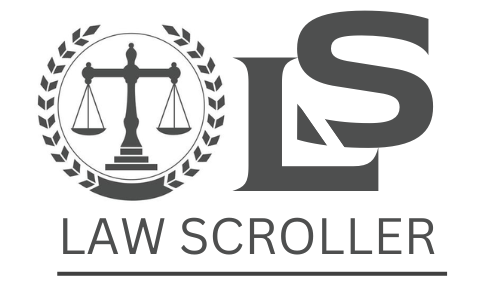The Rise of AI in Corporate Strategy
Companies across all industries are racing to add artificial intelligence to their operations. From customer service chatbots to data analysis tools, AI has become a buzzword that investors want to hear.
But not all AI claims are what they seem. Many businesses exaggerate what their technology can actually do. This practice has earned a name: AI-washing.
AI-washing happens when companies overstate their AI capabilities to attract investors or customers. They might claim to use advanced machine learning when they’re really just using basic automation. Or they might promise AI solutions that don’t exist yet.
Federal regulators have noticed this trend. They’re now taking action to protect investors and consumers from misleading claims.
Regulatory Focus: SEC and FTC Oversight
The Securities and Exchange Commission and Federal Trade Commission have both made AI transparency a top priority. These agencies want to stop companies from making false promises about their technology.
The SEC issued new guidance in 2024 about AI disclosures in financial statements. They expect companies to be clear and honest about how they use AI. Vague statements like “we use AI to improve efficiency” are no longer acceptable.
The FTC has taken a similar stance. They’ve warned companies that AI claims must be truthful and backed by evidence. If a business says its AI can predict customer behavior, it needs proof.
Both agencies focus on three main areas: transparency, accuracy, and accountability. Companies must explain what their AI actually does. They need to verify their claims with real data. And they must take responsibility when their technology fails.
The FTC released specific guidance about AI marketing claims. They made it clear that the same rules for false advertising apply to AI products. There’s no special exception just because the technology is new.
Enforcement Actions and Recent Cases
Regulators aren’t just issuing warnings. They’re taking real action against companies that cross the line.
In 2023, the SEC charged two investment advisers for making false AI claims. These firms told clients they used AI to pick investments. In reality, they had no AI capabilities at all. Both firms paid penalties and agreed to cease-and-desist orders.
Another case involved a healthcare company that claimed its AI could diagnose diseases with high accuracy. The FTC found these claims were not supported by clinical evidence. The company faced significant fines and had to change its marketing materials.
Beyond regulatory action, companies now face growing legal exposure from shareholders and customers. This wave of litigation for AI-washing has proven costly even for companies that settle out of court. Investors have filed lawsuits claiming they were misled by inflated AI capabilities, while customers have sought damages for products that failed to deliver on their AI promises.
The pattern is clear across these cases. Companies made specific claims about AI performance without proper testing. They used technical jargon to hide the limitations of their systems. And they failed to disclose when human workers were actually doing the work they attributed to AI.
One common issue is calling something AI when it’s really just standard software. Simple if-then rules don’t count as artificial intelligence. But many companies tried to rebrand their old technology with AI labels.
The penalties vary based on the severity of the misconduct. Some companies paid hundreds of thousands in fines. Others faced multi-million dollar settlements. Beyond the financial cost, these cases damage company reputations and investor trust.
Best Practices for Compliance
Companies can avoid these problems by following some straightforward guidelines. The first step is honesty. If your system isn’t truly using AI, don’t call it AI.
Create internal checks before making public AI claims. Have technical experts review all marketing materials and investor presentations. They should verify that claims match actual capabilities.
Document everything about your AI systems. Keep records of how the technology works, what data it uses, and how it’s been tested. This documentation protects you if regulators ask questions later.
Be specific rather than vague. Instead of saying “we use AI,” explain exactly what the AI does and what it doesn’t do. Investors and customers appreciate this level of detail.
Avoid promising future capabilities as if they exist now. It’s fine to discuss AI development plans. Just make clear that these are goals, not current features.
Train your marketing and communications teams about AI terminology. They need to understand the difference between real AI and basic automation. Misunderstandings within your own company can lead to external compliance problems.
Conduct regular audits of your AI claims. Technology changes fast, and yesterday’s accurate statement might be outdated today. Review your disclosures at least quarterly.
Build compliance into your product development process. Before launching a new AI feature, have your legal team review how it will be described to the public. This prevents problems before they start.
Consider bringing in outside experts to evaluate your AI systems. Independent verification adds credibility to your claims. It also helps identify weaknesses before regulators do.
Update your internal policies to address AI-specific risks. Make sure employees know the consequences of exaggerating AI capabilities. Create a culture where accuracy matters more than hype.

Navigating the AI Compliance Landscape
The regulatory landscape around AI is still taking shape. But the direction is clear: honesty wins over hype.
Companies that accurately represent their AI capabilities will build stronger relationships with investors and customers. Those that exaggerate will face increasing scrutiny and potential penalties.
As AI becomes more common, expect regulatory oversight to grow. The SEC and FTC are developing more expertise in this area. They’re hiring technology specialists who can evaluate complex AI claims.
The best strategy is to get ahead of these trends. Build transparency into your AI communications from the start. Focus on what your technology actually accomplishes rather than inflating its capabilities.
Organizations should create a compliance culture that values accuracy. This means rewarding employees who catch potential problems early. It means slowing down product launches to get the messaging right.
The stakes are high. Beyond regulatory fines, AI-washing can lead to shareholder lawsuits, customer complaints, and reputational damage. The short-term benefits of exaggerated claims aren’t worth the long-term risks.
Companies that take a careful, honest approach to AI disclosures will stand out in the market. They’ll build trust with stakeholders who are increasingly skeptical of AI hype.
The technology itself offers real benefits. But those benefits need to be communicated truthfully. That’s the path to sustainable growth and regulatory compliance in the AI era.


 Oliver Johnson is LawScroller’s Senior Legal Correspondent specializing in civil litigation, class actions, and consumer lawsuit coverage. He breaks down complex settlements and court decisions into clear, practical guidance for readers.
Oliver Johnson is LawScroller’s Senior Legal Correspondent specializing in civil litigation, class actions, and consumer lawsuit coverage. He breaks down complex settlements and court decisions into clear, practical guidance for readers.